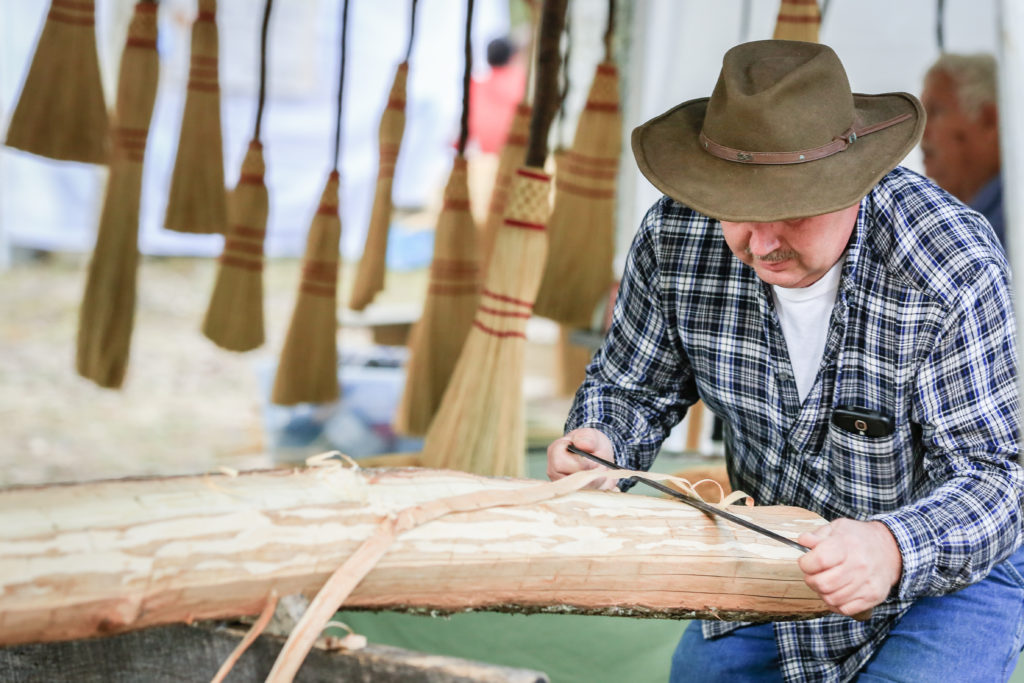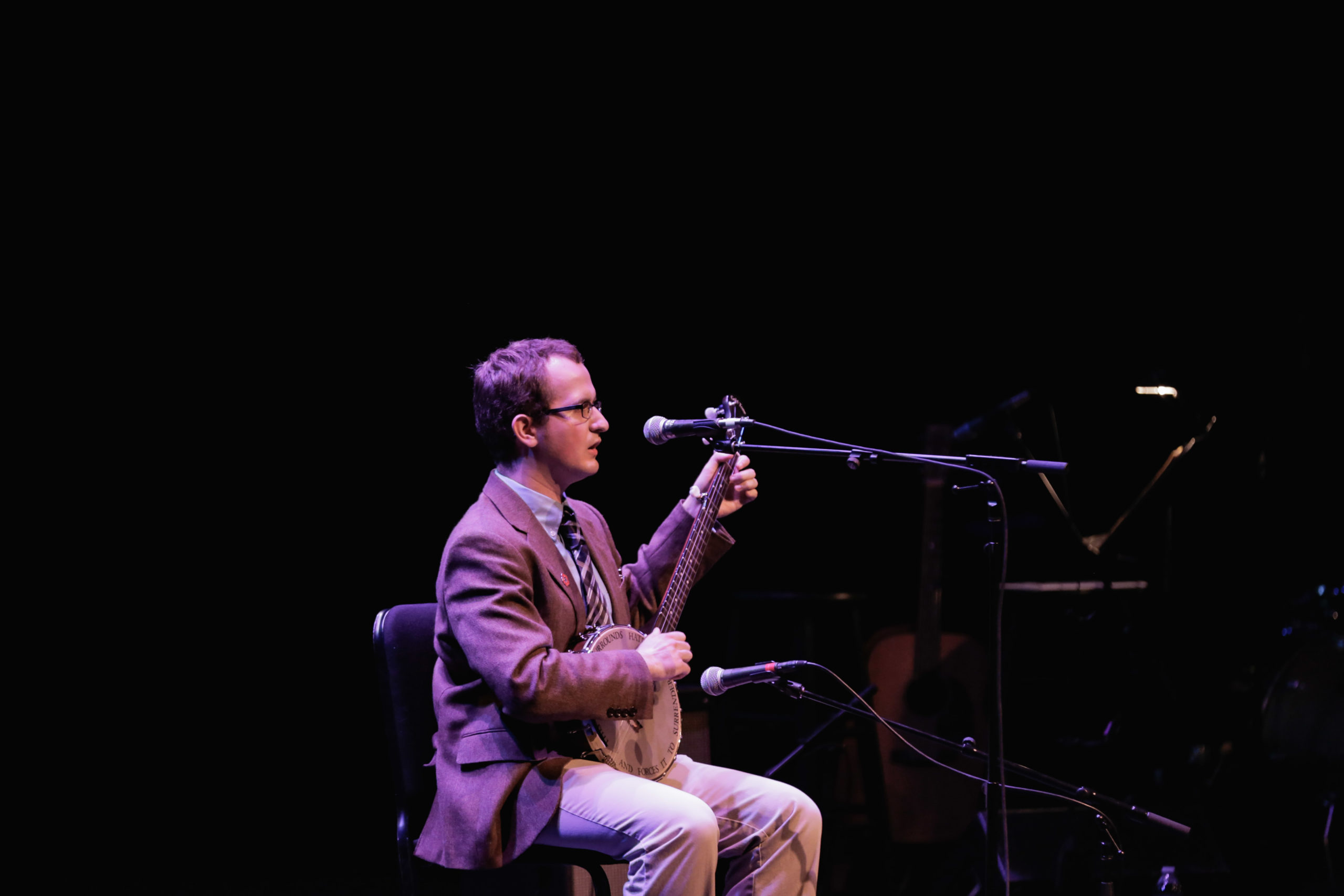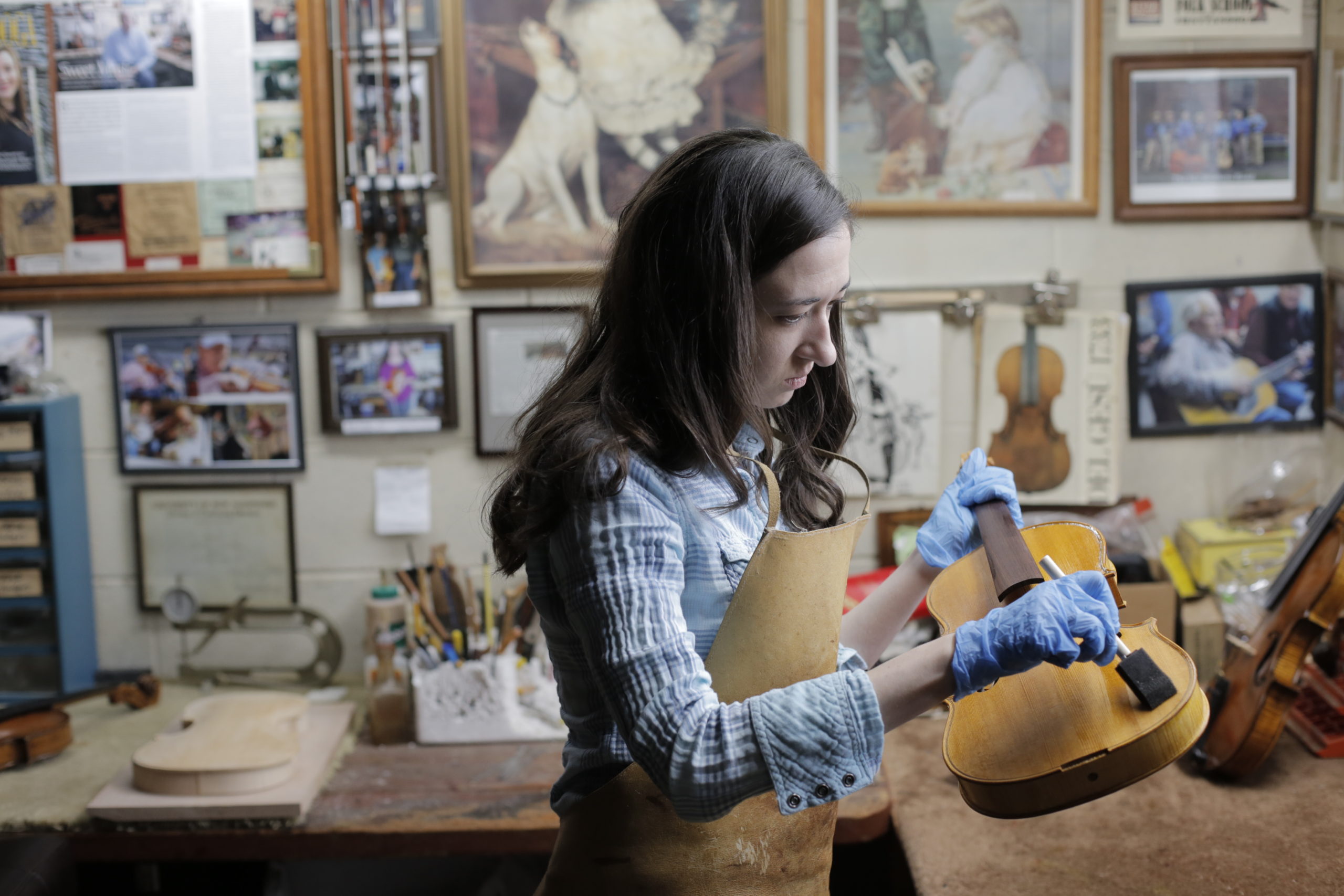South Arts Awarding More Than $160,000 to 18 Artists, Including Four Tennesseans



From Ivan Schustak, South Arts –
South Arts, the nonprofit regional arts service organization advancing Southern vitality through the arts, announces the recipients of two fellowship programs. Nine visual artists (one per state from AL, FL, GA, KY, LA, MS, NC, SC, and TN) will each receive a $5,000 State Fellowship; additionally, they are now in competition for the $25,000 Southern Prize with a residency at The Hambidge Center for Creative Arts and Sciences as well as the $10,000 Southern Prize Finalist awards. Another nine traditional artists and culture-bearers from Central Appalachian counties in KY, NC, and TN will each receive $9,000 Folk & Traditional Arts Master Artist Fellowships to continue their lifelong learning and practice.
The 2020 State Fellowship recipients are:
- Carlton Nell. Drawing. Opelika, Alabama.
- Alba Triana. Experimental. Miami, Florida.
- Fahamu Pecou. Painting. Decatur, Georgia.
- Letitia Quesenberry. Multidisciplinary. Louisville, Kentucky.
- Karen Ocker. Painting. New Orleans, Louisiana.
- Ashleigh Coleman. Photography. Jackson, Mississippi.
- Sherrill Roland. Multidisciplinary. Morrisville, North Carolina.
- Kristi Ryba. Painting. Charleston, South Carolina.
- Bill Steber. Photography. Murfreesboro, Tennessee.
The 2020 Folk & Traditional Arts Master Artist Fellowship recipients are:
- Roger Cooper. Old-time music. Garrison, Kentucky.
- Charlene Long. Willow & honeysuckle basket making. Upton, Kentucky.
- Octavia Sexton. Storytelling. Orlando, Kentucky.
- Janet Calhoun. Pottery. Lenoir, North Carolina.
- Susan Leveille. Handweaving. Webster, North Carolina.
- Bobby McMillon. Ballad singing. Burnsville, North Carolina.
- Meredith Goins. Violin luthiery. Dunlap, Tennessee.
- Jordan Hughett. Ballad singing. Winfield, Tennessee.
- Mark Newberry. Chair-making. Red Boiling Springs, Tennessee.
“South Arts is immensely proud to support every one of these artists, craftspeople, and tradition-bearers,” says Susie Surkamer, executive director of South Arts. “Especially as our country enters the economic disruption caused by COVID-19, artists are among those most vulnerable to losing income. Yet their creativity, work, and stories are what carry us forward and will be integral to rebuilding our communities.”
Applications were open for both fellowship programs in the fall of 2019. The State Fellowships application pool was reviewed by a panel of experts including Ndubuisi C. Ezeluomba of the New Orleans Museum of Art, Edward Hayes, Jr. of The McNay Art Museum, independent art historian and consultant David Houston, and Marilyn Zapf of the Center for Craft. The panel made their recommendations based on the artistic excellence of their work and inclusiveness of the diversity of the Southern region. The Folk & Traditional Art Master Artist Fellowship applications were reviewed by a panel including Native American potter and storyteller Beckee Garris, Zoe van Buren of the North Carolina Arts Council, Mark Brown of the Kentucky Arts Council, and Evangeline Mee of the Tennessee Arts Commission. The panel made their recommendations based on the artists’ history and mastery of their respective tradition as well as the proposed lifelong learning opportunity.
The nine State Fellowship recipients will be featured in an exhibition that is scheduled to open at the Bo Bartlett Center at Columbus State University in Columbus, Georgia in May 2020; due to the current closures of facilities, this date may be postponed. The announcement of which State Fellowship recipients will also be named as the Southern Prize winner and finalist will be announced at a ceremony surrounding the opening of this exhibition.
“I would like to thank each and every one of our donors and sponsors,” continues Surkamer. “Their support and investment in the arts, culture, and tradition of our region is vital even in the best of times, and their ongoing generosity is more important than ever before.”
To view the work by each of these fellowship recipients and read more about the artists and tradition-bearers, visit www.southarts.org.
About the Tennessee Artists
Meredith Goins. Violin Luthiery. Dunlap, Tennessee (Sequatchie County).
2020 Folk & Traditional Arts Master Artist Fellow
Meredith Goins from Sequatchie County is an accomplished fiddler turned violin luthier. She has apprenticed with master violin luthier Jim Humble from Ooltewah, Tennessee to learn violin building and repair for several years. In addition to building violins, she has become skilled at re-graduating violin tops, varnishing unfinished student model violins, and repairing violins for clients. Music is an essential component of the region’s cultural identity, but there are few violin luthiers left to support up-and-coming musicians.
Through this fellowship, Goins will be able to continue working with Mr. Humble who is nearly 80 years old. Goins hopes to share her work with musicians in her community with the skills she learns. In this way, she hopes to honor her father who passed away a few years ago. She says of his influence on her, “My dad was really supportive and introduced me to those who were knowledgeable in the violin luthier community. This is very important for me to continue because it’s something my dad was proud and supportive of. He was a very loving generous person who always tried to help anyone he could, and I’d like to do that in the future.”
Jordan Hughett. Ballad Singing and Banjo. Winfield, Tennessee (Scott County).
2020 Folk & Traditional Arts Master Artist Fellow
Although still young in age, Jordan Hughett of Scott County has already dedicated himself to traditional ballad singing and banjo playing. Hughett’s family has deep roots in East Tennessee, as his fifth great grandfather brought his family to East Tennessee in the 18th Century on a Revolutionary War land grant.
Hughett’s mother and father both sang in the church choir and were always supportive of his musical pursuits. Hughett requested his first banjo when he was 3 or 4 years old. When his mother bought him a toy banjo, he looked up at her and said, “Mommy, I want a real banjo.” His parents obliged and found him one. He eventually began bluegrass banjo lessons with a family friend.
At the age of 13, Hughett first heard a recording of Buell Kazee, a Kentucky ballad singer and banjo player who recorded nearly 60 songs in the late 1920s, and became, as he puts it, “immediately enamored with his singing and playing style.” At that point, he began learning frailing and clawhammer banjo from instruction books and from a woman with whom he attended church.
During Hughett’s sophomore year, by chance, Buell Kazee’s great-granddaughter transferred to his high school. He learned from her that her grandfather, Philip Kazee, also played the banjo and lived in East Tennessee. Hughett jumped at the chance to study with the son of his musical idol. He has spent “countless hours” with Mr. Kazee learning his family’s songs and banjo playing style. He feels the urgency to learn as much as he can in order to preserve the Buell family legacy, as the younger generations of Kazees, though appreciative of the music, have chosen not to do so.
With the fellowship, Hughett hopes to study with noted ballad singers Sheila Kay Adams, and Daniel and Carmen Hicks in order to learn the songs and stories they have collected over the years to add to his widening repertoire.
Mark Newberry. Chair Making. Red Boiling Springs, Tennessee (Macon County).
2020 Folk & Traditional Arts Master Artist Fellow
Mark Newberry from Macon County, Tennessee makes truly traditional Appalachian chairs. His family has been making chairs since 1840 using the same materials, patterns, and construction techniques from one generation to the next. Now the fifth generation of chair makers, Newberry has participated in the family’s process since childhood, at first accompanying his father and grandfather into the woods in search of a hickory tree and to shave the bark for weaving chairs. Although they now utilize modern tools and make larger chairs to fit modern sizes, “the style of lean posts, handwoven hickory bark bottoms and bent backs are the same traditional style as was used in the 19th Century,” says Newberry. He and his family make rockers, dining chairs, high-chairs, corner chairs and crooked back chairs.
Chair making is tied to the Newberry history of farming and a larger “farmer craftsman” tradition. They used chairs to supplement the income from the farm. Eventually, as tobacco farming became unsustainable, the Newberrys made the switch to timber milling to continue the chair making tradition in addition to selling lumber from their property. They have struggled for years to preserve these skills and in 2008, through a Fund for Folk Culture grant, they were able to add a new shop building to their operation. Their chairs were exhibited in South Arts’ (then the Southern Arts Federation) exhibit Tradition/Innovation: Masterpieces of Southern Craft and Traditional Art. Newberry and Sons received the Tennessee Governor’s Folklife Heritage Award.
With this award, Newberry will work with chair makers from the Appalachian region and abroad in order to learn new techniques in chair making. He would also like to teach others these skills that he and his family want to preserve for future generations.
Bill Steber. Photography. Murfreesboro, Tennessee.
2020 South Arts Tennessee Fellow
Bill Steber has documented blues culture in Mississippi for the last 20 years, chronicling the state’s blues musicians, juke joints, churches, river baptisms, hoodoo practitioners, traditional farming methods, folk traditions and other significant traditions that gave birth to or influenced the blues. The work is gathered in his exhibit “Stones in my Pathway” as well as in the pages of Living Bluesmagazine and other publications.
Steber, a native of Centerville, TN, was a staff photojournalist for the Tennessean in Nashville from 1989-2004, winning dozens of regional and national awards while shooting everything from national politics to New York runway fashion and the Super Bowl.
His latest passion is exploring 21st Century American culture through the use of 19th century wet plate photography, including tintypes, ambrotypes and glass negatives.
In addition to his photography, Steber makes music with The Jake Leg Stompers, the Hoodoo Men, The Jericho Road Show and The Worried Minds.
Artist Statement:
My father first put a camera in my hand when I was 10 years old, an act from which I’ve never recovered. I’ve been documenting the South for most of my life: its people, its landscape, its traditions, its surprising beauty and its maddening contradictions. Vernacular culture is born of poverty mixed with genius, and the South has plenty of both to spare. It is the pursuit, preservation and celebration of that culture that drives my own creativity.
I come from a family that regarded creativity as something as natural as breathing. My own personal expression found voice in my love of photography, discovering that I could engage in the world in real time, in ways that engaged my subconscious and made me feel alive and connected.
Since 2005, I have been pursuing the use of 19th Century collodion wetplate photography for my Southern documentary work, discovering that the patience required for the difficult fieldwork and long exposures bring out in the subjects a deeper essence. Though cloaked in the visual artifice of an earlier time, I find that these tintypes and ambrotypes speak to themes that make the South unique, namely, connection to history, family, and the land. Or, as William Faulkner said, “The past isn’t dead. It isn’t even past.
I draw great inspiration from the South, from the people, the stories, the landscape, the sad and beautiful history, but mostly, from the aspirations of those who love it as it is and seek to make it better.

